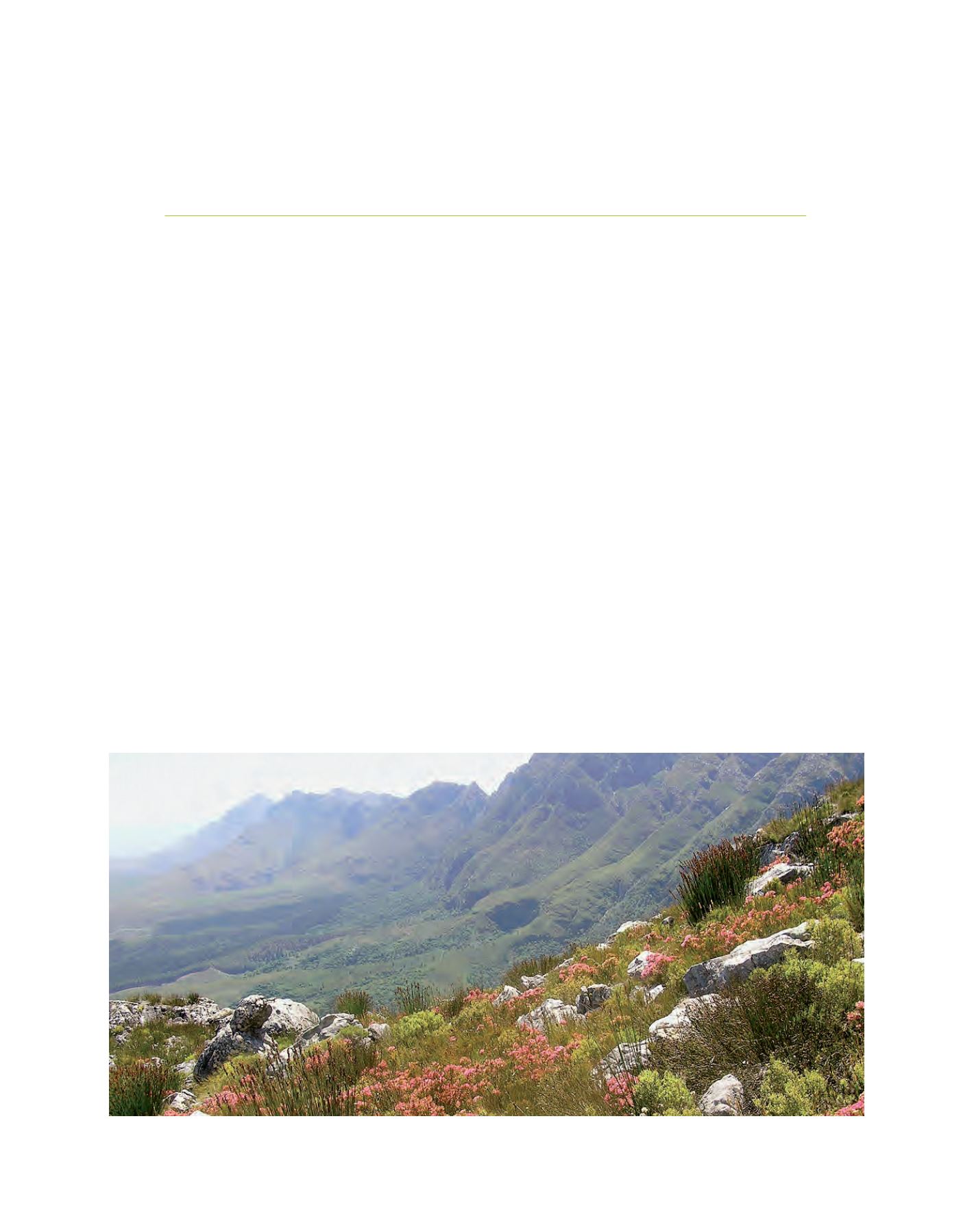

[
] 103
Making stream flow monitoring
work for biodiversity and social justice
Nicky Allsopp, South African Environmental Observation Network
H
ow does a long-term programme monitoring flow rates
from afforested mountain catchments result in a ground-
breaking poverty relief programme? The Working for
Water programme of the South African Government uses scien-
tific evidence to justify the removal of invasive alien plants on
the basis of their detrimental economic impact, whilst providing
employment for unemployed people. This evidence derives from
a monitoring programme started several decades earlier with
quite different objectives.
In 1935, at the fourth Empire Forestry Conference, hosted in South
Africa, concerns of farmers’ associations that plantation forestry
was drying up rivers were debated. Swift action followed with the
establishment of a forestry research station that year at Jonkershoek,
near Cape Town. The first stream flow gauging weirs, based on the
paired catchment principle, began monitoring water runoff in 1937.
Following the Second World War a network of gauging weirs was set
up in mountain catchments around the country in different climatic
regions, with different vegetation. The Jonkershoek data represent
some of the oldest stream flow monitoring records in the world.
Monitoring stream flow is important in South Africa as surface runoff
accounts for 77 per cent of the country’s current water usage.
The resulting stream flow catchment monitoring data
confirmed that plantations of exotic trees used more
water than indigenous vegetation. These data were
used to regularize the forestry industry and, as a conse-
quence, practices adopted to ameliorate water use by
plantations enabled the forestry industry to recently
attain Sustainable Forestry Certification.
In South Africa, most of the invasive alien plant species
are woody plants, many of which have spread from
plantations. They have invaded all important terrestrial
biomes, cover about 10 per cent of the land surface and
most riparian systems, and threaten much of the unique
biodiversity of the country.
1
It is recognized that inva-
sive alien vegetation impacts ecological functioning and
ecosystem services, invades otherwise productive land
and intensifies the impacts of fire, floods and soil erosion.
Data from the experimental catchments were used to
show that almost 7 per cent of water resources were being
lost to invasive plants in the catchments and along rivers,
and in cities like Cape Town, 30 per cent of available water
was lost to these plants.
2
Furthermore, clearing invasive trees
could be done at a fraction of the cost of building newwater
G
overnance
and
P
olicy
Fynbos vegetation in South Africa (foreground) being invaded by pines escaping from plantations (background)
Image: Tessa Oliver
















